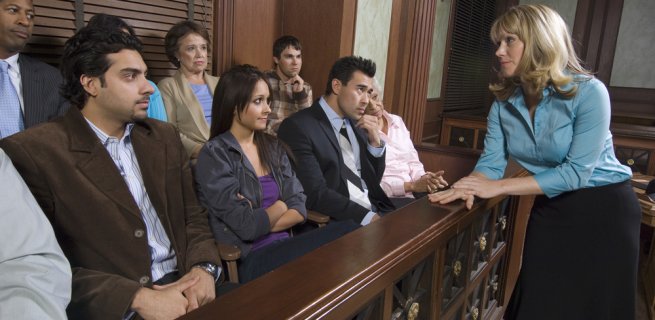It would be nice to trust police to carry out their investigations in a fair manner, but what if the methods they use to get the answers they want are fundamentally flawed?
A new study by two forensic psychologists has found that – through unfair interviewing methods – police are able to plant false memories of crimes into the minds of distraught and vulnerable people, and pressure or trick them into making confessions to crimes that they did not commit.
A Case in Point
In 1988, Martin Tankleff was a high school senior in Long Island, US, when he entered his parents’ bedroom one morning to find a horrific scene. Both parents were on the floor bleeding from stab wounds – his mother dead and father dying.
Police attended the scene and arrested Tankleff on suspicion of murder. They took him to the police station and – despite the fact that he was suffering from severe shock – subjected him to a relentless interrogation.
At one point, the police officer falsely stated that his father was alive in hospital, and had named him as the killer. Tankleff was distraught and – based on that information – said that he must have blacked out and committed the heinous crime.
That ‘admission’ was a crucial part of the prosecution’s case, and Tankleff was convicted by a jury and sent to prison for 17 years – that is, until the real murderers were ultimately found.
The Research
The new study by psychologists Julia Shaw and Stephen Porter found that the power of suggestion is so great that we can invent false memories more easily than previously thought.
Shaw and Porter contacted the parents of the study’s participants to obtain biographical details, which they used to form the basis of stories – but those stories were otherwise completely fabricated.
They told the first group about a highly emotional event that had happened while they were teenagers, like a dog attack. They got the second group to remember a crime they had committed, describing the incident and the ensuing encounter with police.
Although both sets of stories were invented, 70% of all participants adopted the false memory as the truth. When asked about it again later, the participants often added details, while genuinely believing that the event had happened.
All it took to create these false memories was a suggestion from an authoritative source, and a few details.
One woman was told about a fight she had with another girl while they were teenagers. When asked about it again later, she added the fact that she had thrown a small rock at the girl.
On the final retelling, the rock had grown to be the size of her fist, and she ‘remembered’ throwing it at the other girl’s face.
The findings were particularly concerning given that the researchers took pains to simulate the conditions of a police interview.
Indeed, it is not uncommon for police officers to mislead suspects in order to extract confessions. As the researchers explained:
“This research calls into question whether we should be putting so much weight on memory in court. It’s sort of a reality check.”
The researchers concluded that, due to their fundamental unreliability, we should be questioning whether confessions should be admissible in court at all.
Other Research
The study is certainly not the first into the phenomenon of ‘false memories’, let alone false confessions.
Indeed, cases of false confessions have been reported since at least the early 1900s, when a farm boy was hanged after confessing to a killing that he did not commit.
In 1906, the chair of psychology at Harvard University, Hugo Münsterberg, noted that the boy:
“… was quite willing to repeat his confession again and again. Each time it became richer in detail … [it was] absurd and contradictory.”
NSW Law
The law in NSW recognises that ‘admissions’ are an unreliable form of evidence.
Section 85 of the Evidence Act 1995, titled ‘Criminal proceedings: reliability of admissions by defendants’, states that:
(2) Evidence of the admission is not admissible unless the circumstances in which the admission was made were such as to make it unlikely that the truth of the admission was adversely affected.
In deciding whether the admission is admissible, the judge is required to take into account:
(3)(a) any relevant condition or characteristic of the person who made the admission, including age, personality and education and any mental, intellectual or physical disability to which the person is or appears to be subject, and
(b) if the admission was made in response to questioning:
(i) the nature of the questions and the manner in which they were put, and
(ii) the nature of any threat, promise or other inducement made to the person questioned.
In practice, the immense evidentiary value of confessions can lead to their admission into evidence despite evidence of vulnerability or police pressure, subject to warnings to the jury by the trial judge that they must be very careful before adopting them as the truth.
Despite those warnings, jurors may place enormous weight upon confessions, perhaps asking themselves “why would a person admit to a crime that they did not commit?”
This has the potential to result in the monumental injustice of wrongful convictions.











